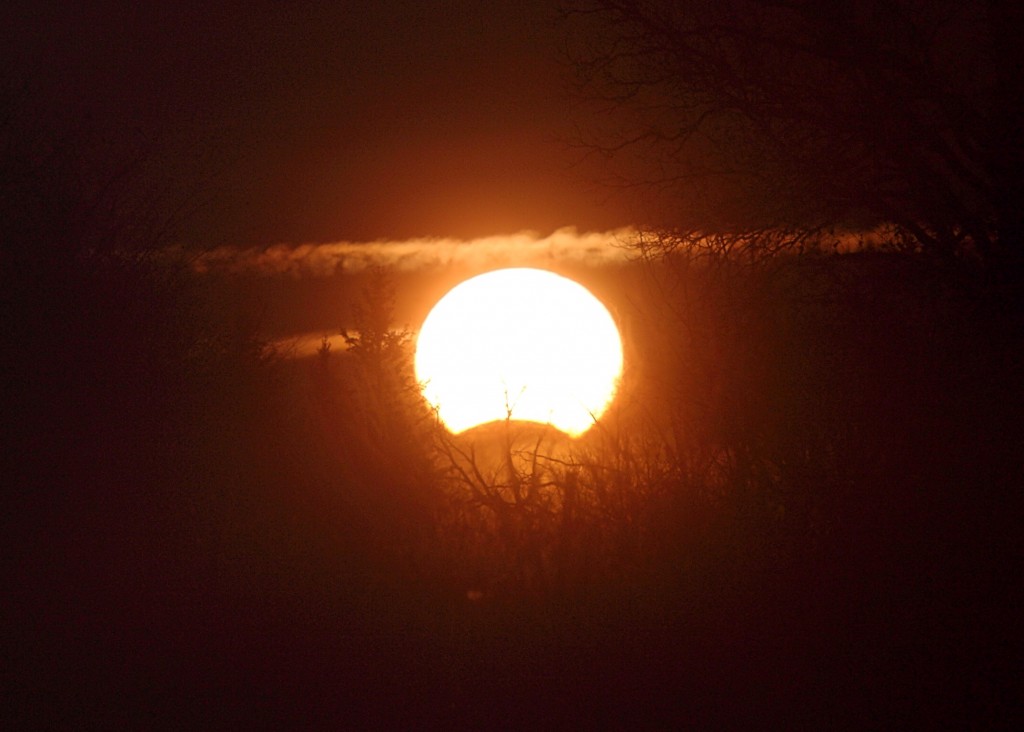by Pat Browne
Last Sunday, November 3 2013 marked the date of one of the two solar eclipses that occur each year somewhere on earth. This was a special hybrid eclipse.
It was hybrid because it was both:
- total eclipse – because the Sun was totally hidden from view (when the shadow reached landfall over Africa)
- annular eclipse – because the Moon was a little bit further out from the Earth so it appeared a little smaller than usual
For Canadian observers near the East Coast, it happened to be a
- partial eclipse – because the view of the Sun was only partially hidden for our location on Earth at sun rise time of the eclipse event.
(Full totality had occurred when the eclipse path reached Gabon Africa . There and then, the Sun was completely hidden, eclipsed by the moon, for African observers on earth.)
We had an early-bird amateur astronomer who saw the sun rise with a piece missing. Rolf Meier an amateur astronomer ( and comet discoverer in the Mississippi Valley Night Sky Conservation Area, – see http://www.rasc.ca/canadian-comets), captured this image.

Solar Eclipse Track
Solar Eclipse Geometry
A geometrical requirement for a total eclipse is the Moon must be at a ‘new’ phase, since that places it directly between the Earth and the Sun. For this to occur, the Sun is near one of the nodes of the lunar orbit, so Earth, Sun and Moon form a straight line, For an eclipse to occur, the line of intersection of the two planes must lie along the Earth-Sun line. Thus, eclipses can occur only at specific times of the year. The two points on the Moon’s orbit where it crosses the ecliptic plane are known as the nodes of the orbit. The line joining them, which is also the line of intersection of Earth’s and the Moon’s orbital planes, is known as the line of nodes. The Sun, Earth and nodes are aligned twice a year, and eclipses can occur during a period of about two months around these times.



